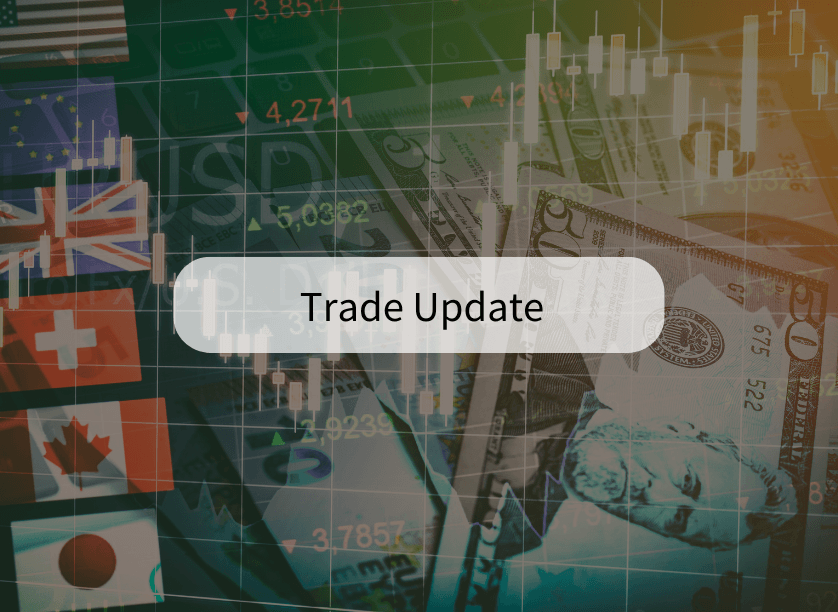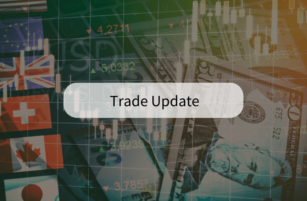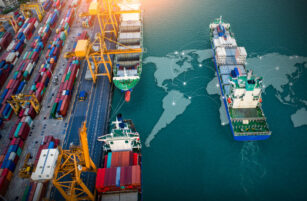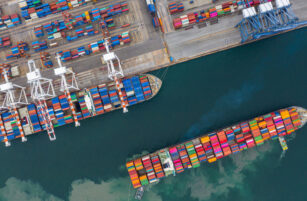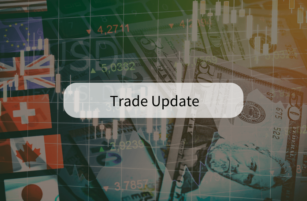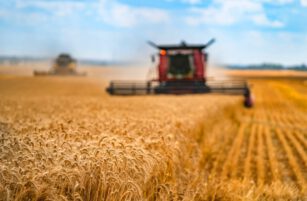Insight Focus
The US remains in the spotlight due to constant threats of new tariffs. This time, the EU is in the crosshairs – but the bloc plans its own retaliatory measures. However, the tariffs, as well as disease and weather issues, have prompted food inflation to speed up again after a period of stability, jeopardising economic growth.
Trump Sets Sights on Europe
After threatening to impose tariffs on a host of countries since taking office in January, US President Trump has announced tariffs of 25% on all EU imports. The US president already announced 25% tariffs on all steel and aluminium products, regardless of country of origin. The wholesale tariffs have not yet been imposed, but already, the EU is fighting back, announcing retaliatory measures targeting US industries such as bourbon, jeans and motorcycles.
According to Eurostat figures, EU trade in goods with the US was valued at about EUR 865 billion in 2024. In 2023, the US was the EU’s largest partner for exports of goods and second largest for import of goods.

Source: Eurostat
President Trump has also insisted that his previous threat of tariffs on Canada and Mexico will go ahead as planned and could be imposed as early as April. The president’s constant threats of tariffs have generated confusion and uncertainty among businesses and consumers, with many fearful that the levies will push up the cost of goods just as inflation was beginning to ease. But the president claims that revenues from the import taxes will ultimately help reduce the federal deficit.
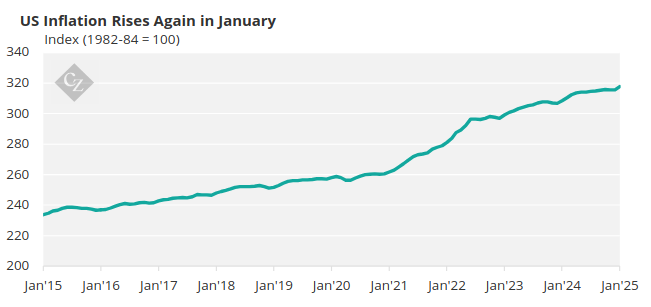
Source: US Bureau of Labor Statistics
Eggs Respond to Avian Flu
US consumers are already facing higher prices when it comes to eggs. Thanks to outbreaks of highly pathogenic avian influenza (HPAI), the country’s commercial table egg layer flocks have been decimated. The USDA estimates that, so far in 2925, 26.8 million table egg layers have been lost to HPAI. As a result, prices have skyrocketed to reach almost USD 5/dozen in January from an average of about USD 1.67/dozen in 2021.
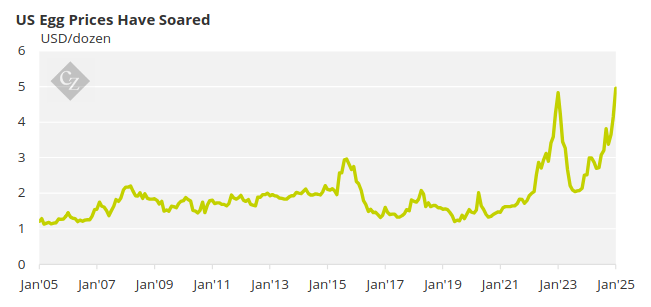
Source: St Louis Fed
Weather Woes Add to Food Price Increases
In addition to the impacts of tariffs and trade wars, extreme weather events are also likely to push up food prices. According to research from consultancy Inverto, cocoa prices have risen by 163% and coffee by 103% in the past year due to abnormal rainfall and high temperatures. Sunflower oil, orange juice, butter and beef, have also experienced notable price hikes.
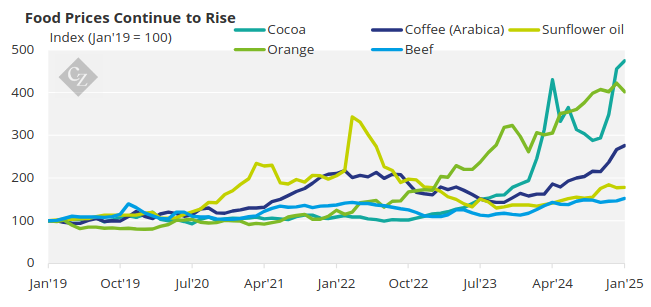
Source: World Bank
Supply Chain Tensions Unravel
One factor that isn’t contributing to food inflation right now is freight rates. Since mid-January, rates have been falling for a number of reasons, including the ceasefire in the Middle East, the resolution of the US East Coast port strike and the beginning of a lower demand season in the aftermath of Chinese New Year. According to a report by Metro, 30% of Far East westbound sailings will be blanked as global capacity is set to rise by 5%.
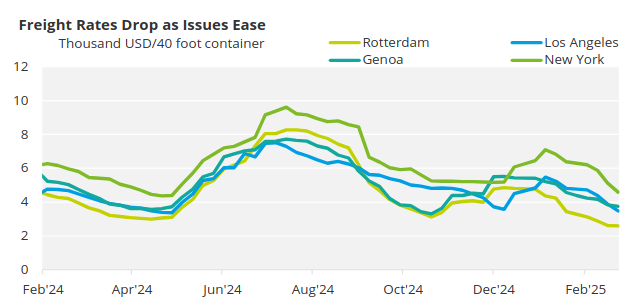
Source: Drewry
